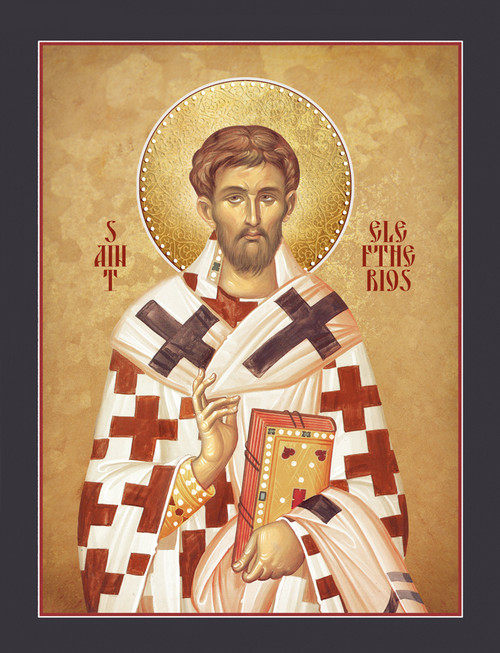Saint Fiacre of Breuil, Patron Saint of Gardeners
Commemorated August 30th
From Saint Fiacre's scroll: “O Lord our God Who didst adorn the earth with herbs and grasses, and with the sowing of seed, and hath established all blossoms as fitting adornment. Do Thou Thyself also bless this garden and grant that it bear fruit in its season, full of Thy blessing. For sanctified and most glorified is Thy most holy Name. Amen.”
St. Fiacre was born in Ireland at the beginning of the seventh century and entered a monastery at a young age. Much of the worlds learning and knowledge was brought to the monasteries and left in the care and protection of the monks. Travelers brought seeds and plant material, as well as cultural enlightenment from as far away as Africa and the Holy Land and Asia. St. Fiacre's days at the monastery taught him a deep love of silence, the joys of planting and harvesting crops and an appreciation of nature. Drawn to the contemplative life and the desire to serve God in greater solitude, Fiacre decided to establish a hermitage for prayer. He traveled south and chose a wooded area by the Nore River for his home, with a cave for meditation, a well for drinking water and the river for irrigating his garden.
Monks in those days were regarded as physicians of the body as well as the soul. Soon people were flocking to Fiacre for prayers, food and healing. He fed the hungry and healed the sick with herbs from his garden and prayed for all who came to him. Longing for greater solitude, Fiacre traveled to France where the Bishop of Meaux granted him land in a wooded area near the Marne River.
The first miracle attributed to Fiacre, occurred when he asked the Bishop for additional ground for his garden. The Bishop told Fiacre he could have as much land as he could entrench in one day. According to legend, the next morning Fiacre merely dragged his spade across the ground, causing trees to topple and bushes to be uprooted. He cleared the ground of trees and briers, made himself a cell with a garden, built a chapel in honor of the Virgin Mary, and made an inn for travelers which developed into the village of Saint-Fiacre in Seine-et-Marne. Many people came to him for advice, for food, and for cure from illness. His charity moved him to attend cheerfully those that came to visit him.
Thus was established St. Fiacre's famous monastery where he welcomed all who sought his counsel and healing. A culinary garden that fed the poor, a physic garden that cured the sick, a flower garden and an herb garden occupied the expanse of property surrounding the monastery.
Even after his death around 670 A.D., people continued to visit the monastery and, as legend would have it, receive physical and spiritual healing. To this day crowds visit St. Fiacre's shrine, where his relics are still believed to contain healing powers.
Source: http://stgeorgeofboston.org/news/saints/archive/860/Stfiacre
Exact Dimensions:
Small ~ 4x6"
Large ~ 7x10"
X-Large ~ 11x15"
Please contact us for larger sizes.







